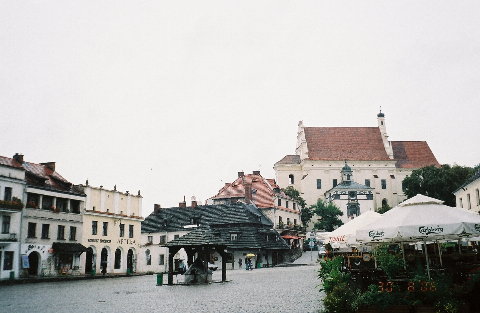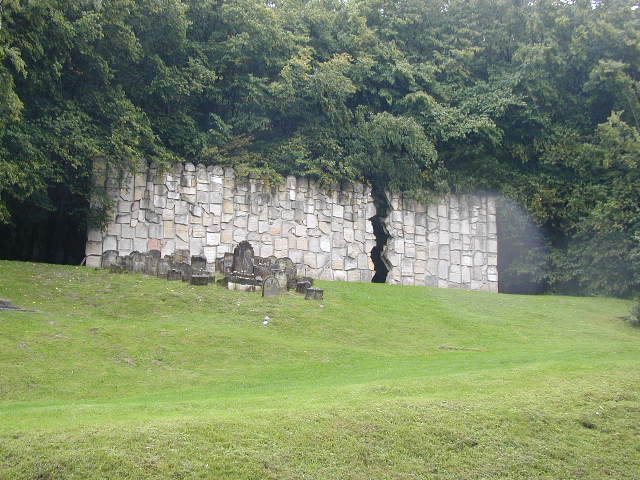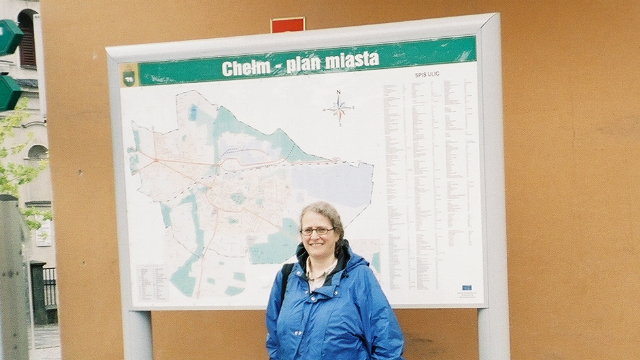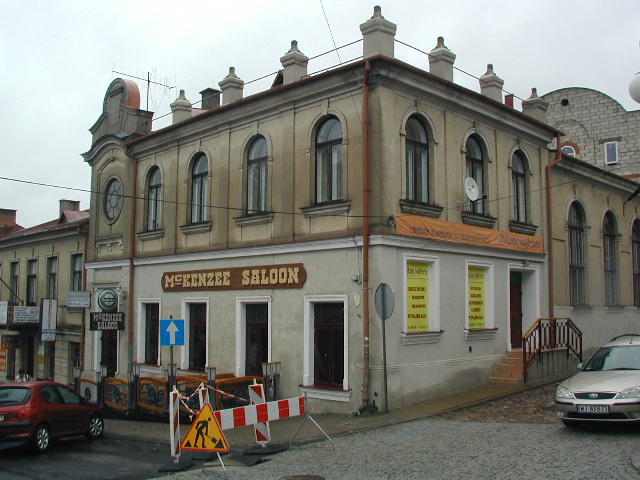
The next phase of our trip had us traveling southeast, towards the Ukrainian border. We started out following the Vistula River southwards, through miles of flat farmland, to Kazimierz Dolny. This town was built by King Kazimierz II in the 14th century. There are attractive granaries along the Vistula as you enter town and a ruined castle above it which is said to have been built for his Jewish mistress, Estera. The claim is that Kazimierz II built 80 castles, one for each of his mistresses, but still never managed to have any children. The resulting succession crisis resulted in a young queen marrying the Duke of Lithuania, uniting the two kingdoms. At any rate, Kazimierz Dolny has an attractive market square, with well preserved 17th century houses.

We stopped for coffee and a sort of apple pastry and meandered briefly around the square. Tomasz pointed out the bas reliefs on one building, in which the husband and wife faced away from each other towards their neighbors' spouses. He also pointed out a local bread in the shape of a rooster. Back in the car, we continued on to the Jewish cemetery, which has a replica of the Kotel (i.e. the Western Wall).

Continuing eastward, we passed through the spa town of Naleczow. Alas, the rainy and chilly weather was not conducive to a walk in the park there. We did stop in Lublin because Mom wanted to go to a department store. She had heard from somebody that there would be lots of clothing in her tiny size in Poland, but couldn't find anything she liked.
Further driving took us past Majdanek, which was the second largest of the Nazi death camps, with about a half million people murdered there. Eventually, we arrived in Chelm, where we drove briefly around the town before settling in to the Hotel Kamena for the night. The hotel was adequate and we had dinner at their restaurant, which had a number of cheap basic set meals (fruit juice, soup, main course, tea or coffee). I should also note that the menu was in German and English as well as Polish.
The multilingual menu didn't help much for breakfast though, as one of the offerings was translated as "firm hot snack." I had no idea what that meant, so decided to order it to find out. It turned out to be some sort of soup and was actually quite tasty.
Our morning sightseeing took us up to the top of a hill overlooking Chelm. I was quite relieved to see the hill, since the folkloric origin of Chelm is dependent on the angel distributing the souls of the wise and of the foolish getting one of his sacks of souls caught on a peak. And, of course, when the wise men of Chelm were building the town, they carried the logs of the trees they had cut down the hill. When a passerby saw that and suggested that the logs would roll, they carried them all back up the hill in order to roll them down. Some people call the Chelmites foolish, but I prefer to think of them as "differently logicked,."
We walked through the Jewish cemetery, which is in better condition than most since it has been restored by the Nissenbaum Foundation. Back in the center of town, Mom waited in the car while Tomasz and I walked to the market square, where I had him take a picture of me in front of the town map.

I also photographed the former synagogue, which is now a bar with a wild west theme.

I'll also mention that, in general, non-Jewish Poles don't know the stories about Chelm. When I told Tomasz about them, the only one he recognized was the one about trapping the moon in a barrel. He explained that the current president and prime minister (who are twin brothers) starred in a movie based on that story.
Finally, I'll note that the one actual tourist attraction in Chelm is a chalk mine. Mom was concerned about the cool temperatures underground, but was willing to sit in the car while I toured it. However, since seeing the mine would take over an hour and it didn't open until late morning, I decided it wasn't important enough to make her wait. Instead, we continued on to Krakow - and the next chapter.
[Back to Last Chapter | On to Next Chapter | Back to Index]
Copyright 2006 Miriam H. Nadel
last updated 28 October 2006